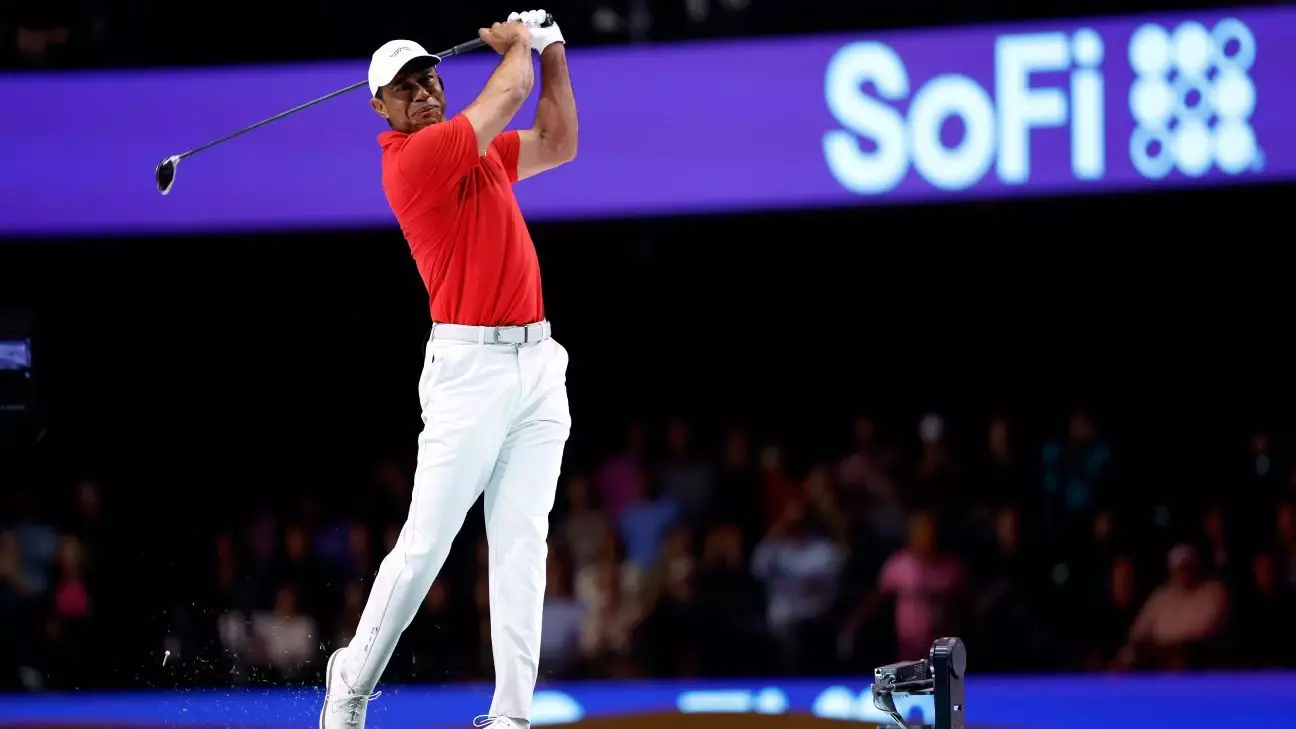In a groundbreaking evening at the SoFi Center in Palm Beach Gardens, the world witnessed a historic milestone in the realm of professional golf. Tiger Woods, often hailed as the epitome of the sport, made his much-anticipated debut in the TGL (Tech Golf League), a revolutionary indoor golf format. As the theme song “Eye of the Tiger” resonated through the air, the presence of Woods was palpable, making any formal introduction redundant. This moment was more than just another game for Woods; it symbolized the culmination of years of effort spent advocating for an innovative approach to golf that transcends the traditional boundaries of the sport.
The match was structured to immerse viewers in an anxiously exhilarating environment, featuring teams composed of renowned golfers. Woods partnered with Kevin Kisner and Max Homa from the Jupiter Links Golf Club, facing off against formidable players from the Los Angeles Golf Club, including Justin Rose and Collin Morikawa. The format consisted of a mix of alternate shot triples and singles play, designed to keep the excitement high. However, the reality of competition hit early as Woods’ team fell behind rapidly. Despite an uneven scoreline of 12-1 in favor of Los Angeles, Woods maintained his trademark composure and charisma. His performance was peppered with flashes of brilliance, and he consistently showed an eagerness to engage with the game’s nuances, indicating his deep commitment to evolving as a player.
Throughout the match, Woods wore a smile, reflecting the joy of simply playing despite the daunting scoreboard. His notable moments included sinking crucial putts that not only showcased his skills but also provided a morale boost for his team. Each successful play was met with applause, resonating with nostalgic echoes of his past triumphs, while the occasional mishap—like his errant wedge shot that plummeted into the water—reminded spectators that even legends have off days. The support of family, exemplified by watching his son Charlie find humor in the situation, added a poignant touch to the competitive backdrop.
The event attracted a plethora of celebrities and showcased the intersection of sports and entertainment. Tennis icon Serena Williams, a friend of Woods and a key figure in the ownership group of the Los Angeles Golf Club, found herself in a uniquely conflicted position, cheering for Woods while representing his rivals. This scenario illustrated the blending of identities and allegiances typical in modern sports, showcasing how traditional rivalries are evolving in tandem with new formats. Williams’s keen enthusiasm for the event marked a significant shift, as golf begins to embrace elements commonly found in other sports—such as theatrical entrances, dynamic presentations, and engaging personalities.
The TGL represents a paradigm shift in the presentation of golf, challenging audiences to reconsider how the sport can be enjoyed. By creating visually engaging experiences, particularly in an indoor setting, organizers aim to attract younger audiences who seek excitement alongside tradition. Woods, alongside McIlroy and others, are not only leading this charge; they are helping redefine the very framework of professional golf. The incorporation of advanced technology, vivid visuals, and a more interactive format serves to deepen engagement with both existing fans and newcomers alike. The presence of the tech-savvy audience during Woods’ match signals a promising future for the sport.
As Tiger Woods continues to innovate and challenge the norms of golf, his debut in TGL serves as a microcosm of the evolution taking place within the sport. Memories of Woods’ past accolades merge seamlessly with the potential advancements of today and tomorrow. The evening encapsulated not only an exciting beginning for a new golfing format but also a testament to Woods’s enduring legacy as he once again steps into the spotlight—proving that while he remains a storied champion, there is always room for growth and reinvention.

